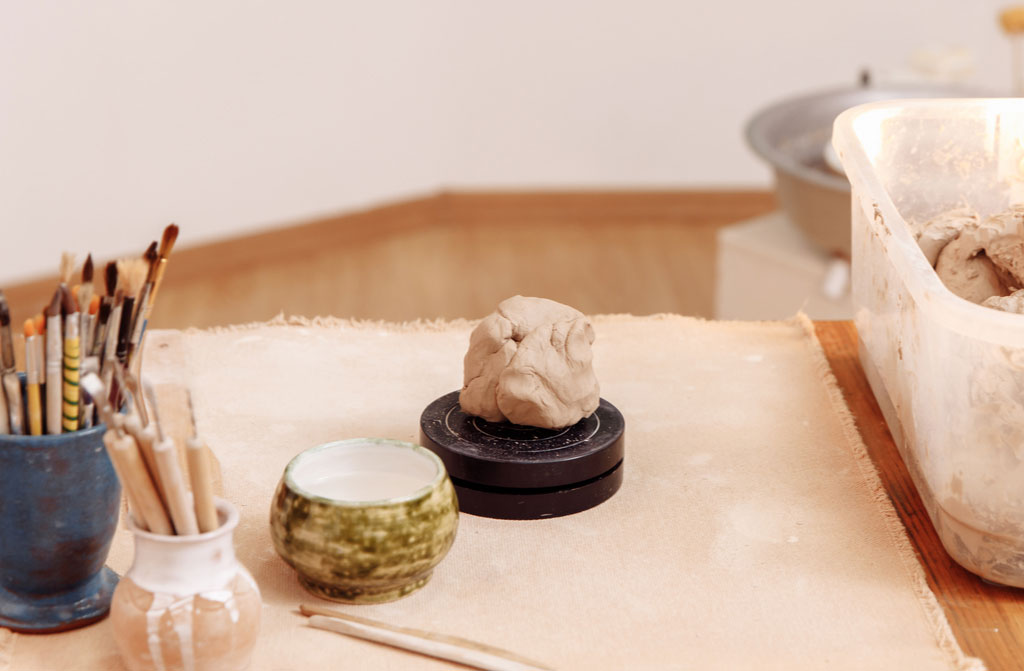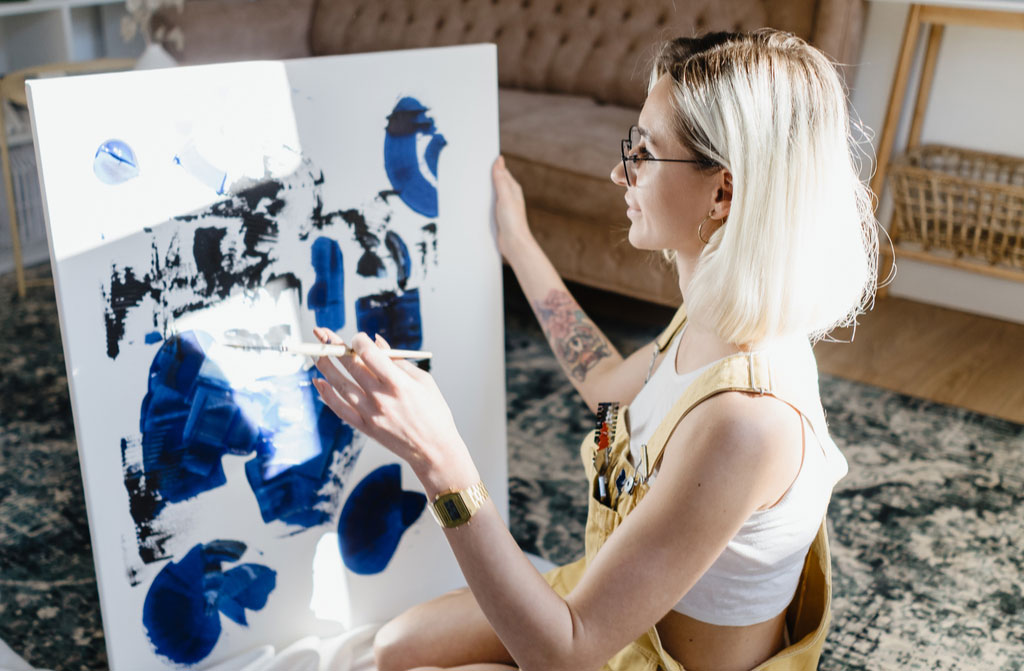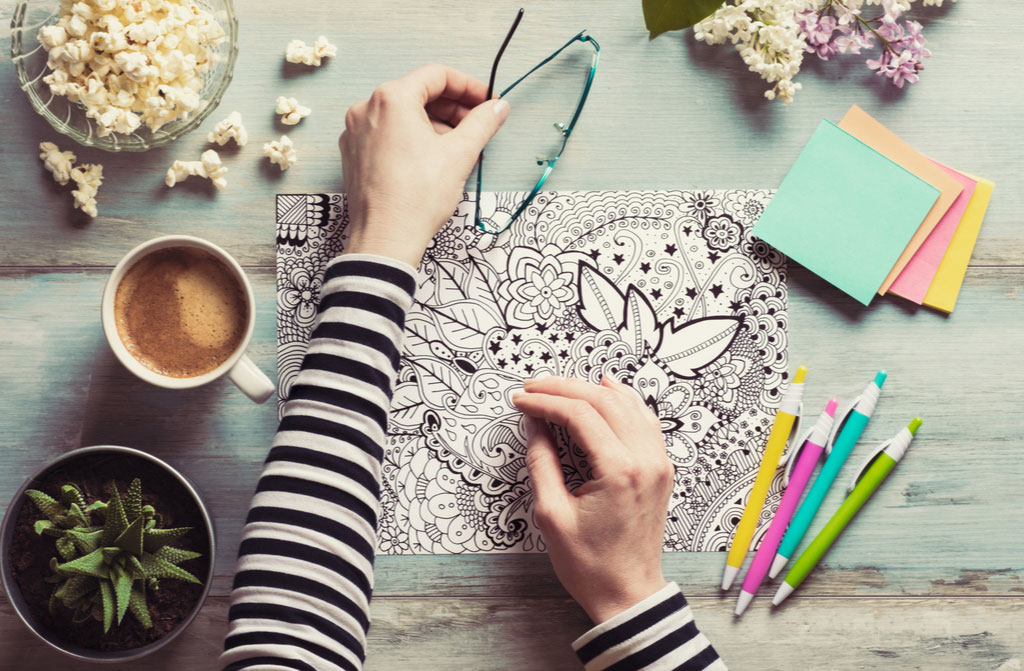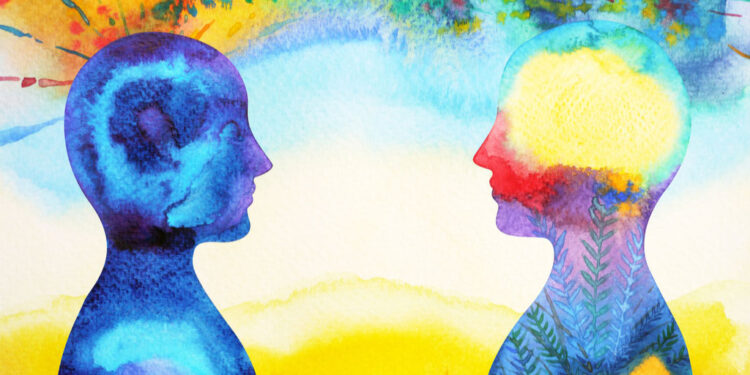Over the last couple of years, we have all faced some troubling times. Having to reinvent our lifestyle and habits wasn’t easy. If an outing with friends used to be something casually overlooked for a night of Netflix and chill, the year 2020 came to teach us all a lesson. Whether it was something as simple as walking our dogs or as complex as organizing a trip abroad with friends, the last couple of years changed our perception of things.
I used to see walking my dog as a chore, especially after a long day at the office. Nowadays, those walks are the highlights of my day. Not because I am tired of working, but simply because I need a breath of fresh air and a walk. Remote working has its ups and downs, but extended periods of time spent indoors have a negative impact on our psyche.
While there are many ways to regulate your perspective on life and improve your mental health during these stressful periods, art is one of them. Psychologists and therapists have been promoting various methods of coping and dealing with problems. Whether these come from traumas or are a result of the last two years, alternative therapies like art can reduce stress levels and give us a reflective perspective on our emotions.
Summary:
- Why do we Need Art Therapy?
- What is Art Therapy?
- Types of Therapy through Art
- Art’s Healing Properties
- Basic Know-How of Art Therapy
- Conclusion
Why do we Need Art Therapy?

The past couple of years weren’t the easiest for individuals with mental health issues or those in not the best situations at home. Art therapy might not be for everyone, but those it works for can do it from the comfort of their home. No experience or studies are necessary, and you can dabble your toes in any kind of artistic movement from painting to film photography and more. You just pick up a paintbrush, a pen, paper, or a camera and get ready for some quality time with yourself. You can even use it to unplug. If you work remotely, taking a break from your home office to doodle a bit will positively impact your stress levels.
From infancy, we used to draw, paint or mold clay. What we might not have been aware of at the time is that it calms our nerves, helps us to communicate and express our emotions. However, as adults, our busy lives had always gotten in the way of any artistic pastimes we might have enjoyed at our young age. Unfortunately, adulthood is the exact time when creative expression can benefit us the most. During infancy, stress is not something that occupies our time. Adulthood, in the meantime, comes with all the struggles of maturity.
From anxiety to chronic depression and everything else on the spectrum, art therapy has many beneficial effects on our mental health. When conducted under the guidance of a skilled therapist, visual art can prevent sickness, increase health, and improve the individual’s overall well-being. Organizing an artistic corner in your home will make it easier for you to express yourself creatively.
What is Art Therapy?

Art has been used as a way to express emotions, communicate and improve the well-being of a community for centuries. Nowadays, therapeutic use of art can be done through several types of visual arts. Psychologists use this therapy method to positively impact a person’s physical, emotional, and mental health.
Having been established around the mid-20th century, doctors discovered that patients with mental disorders preferred to use visual methods to express their emotions. That discovery made it possible for more patients to be introduced to this revolutionary type of therapy and get the help they needed. The whole concept is based on the fact that creative expression can help heal and improve mental well-being. Furthermore, theories about the effect it can have on the minds of small children started popping up. But we’re not here to talk about that.
Art was used for centuries by man-kind. Whether it was a tool of communication, self-expression, or healing, humans applied it in their daily lives. Proper use of art therapy only began in the 1940s. In 2021, art therapy is an important part of the therapeutic field and process, being applied in assessments and treatments alike.
Types of Therapy through Art

Experts in this field distinguished the two types of art therapy: art in therapy and art as therapy. While art in therapy focuses on the end result of the creative process, art as therapy focuses on the journey. Each is used for different reasons in therapy as their goal is different.
The process of creating art through drawing, sculpting, dancing, paintings, or writing has calming abilities on patients. It works to reduce stress levels and depression. An art therapist is closely monitoring the creative process. At the same time, they will keep track of the patient’s well-being, facial expressions, and body language. Occasional questions about the patient’s feelings will give the therapist further insight.
On the other hand, therapy that focuses on the end result is introspective psychological therapy. Once art is created, the patient and the therapist work side-by-side to decipher the meaning behind the artwork. Through the creative process, patients might subconsciously convey emotions or events that are difficult to express verbally. By the use of their hands and art supplies, patients may express their inner-most thoughts. They can open the door to emotions that have been repressed and uncover beliefs from a subconscious level. Due to its introspective nature, art in therapy is used to reduce traumas. It is highly effective in treatments for post-traumatic stress disorder (PTSD).
Art’s Healing Properties

Art, as a process, is incredibly intimate and personal, and art therapy gives patients a safe space where they can explore their feelings. Due to the negative impact some emotions have on our mental health, the therapy focuses on unpleasant emotions like anger, fear, or sadness. These feelings usually place people in uncomfortable situations, and they are more likely to avoid talking about them. Art therapy is a tool through which patients can experience these emotions less directly.
Therapy through art can be applied to treating multiple conditions and is not limited to specific age groups. Some of the conditions that can see improvement through art therapy are severe stress, learning disabilities, domestic abuse trauma, anxiety, depression, to name a few. For depression and anxiety, art can raise the serotonin levels in the brain. On the other hand, for PTSD treatment, art therapy alleviates symptoms by visual expressions of traumatic events. Older patients have been shown signs of memory improvement and reasoning after having been subjected to art therapy. Painting and drawing or other hobbies that won’t break the bank also showed signs of stimulating memories in patients with neurological diseases like dementia.
When it comes to mental health, art therapy is known to increase the number of connections in the brain. It does this by its impact on memory, mood and also enriching a person’s vocabulary. Looking at other illnesses, modern psychology shows therapists can use it to treat cancer. Art therapy lowers stress and pain perception, improving the quality of life for the patients.
Basic Know-How of Art Therapy
Art therapy is a relatively new process that is used in a new field of study. This novelty makes it misunderstood and flooded by misconceptions. There are some facts you should know if you or someone close to you is considering art therapy.
No Artistic Abilities Required

Nobody says that you have to be a new Picasso to participate in art therapy. Artistic abilities and special talents are not required, making it incredibly approachable for all ages. Whether a child, a teenager, adult, or senior, the patient can benefit from therapy through art. Some researchers discovered that being exposed to art can improve their mental health. It doesn’t only increase the comfort of the environment but also enhances socializing.
Not an Art Class
When you go to an art class, you are taught techniques to create an end product. Art therapy involves more introspection and self-reflection, helping patients focus on inner experiences that might have an unpleasant impact on them. Through the process of creation, people can focus on their perceptions, feelings, and imagination. This encourages them to express their inner struggles and create a visual representation of their inner world.
Art Therapy Locations

The only thing that matters when it comes to location is that the space is comfortable enough for the patient. Art therapy isn’t limited to inpatient offices or private mental health offices. Art studios, group homes, correctional facilities, dance studios, hospitals, senior centers, and many other facilities make art therapy more available for the public. Creative hobbies can work to reduce stress levels and you can do them from the comfort of your home. What is important for art therapy is having the art therapist guide you through the process. Mental health is a serious issue, and a specialized therapist is necessary.
Conclusion
The study of art therapy is one of the easiest to approach treatment methods for some of the most devastating psychological disorders. Trained professionals can provide the guidance and analysis necessary to use art for its scientifically therapeutic benefits. However, mental health doesn’t only apply to people with psychological disorders.
The past couple of years tested all our mental health, and we started looking for ways to lower stress, decrease depression and relieve anxiety. Germophobia has also been on the rise. Even if these experiences don’t lead to panic attacks or insomnia, that does not mean that you have to go through those episodes. You can pick up drawing again, or writing, or whatever it was you liked to do in your childhood. Coloring books targeted at adults are growing in popularity. Their intricate designs require increased levels of attention. But this type of activity relaxes our minds and helps us to deal with stress.So try it out. If you’ve had enough of this Pandemic and want to ease your mind and stress in a controlled environment, stop by an Arts and Crafts store. Don’t hesitate to contact a therapist if you are dealing with a psychological disorder or have problems falling asleep, focusing, or dealing with emotions. Mental health doesn’t only affect our mood but can seriously impact physical health as well. There’s no need to overlook it.











